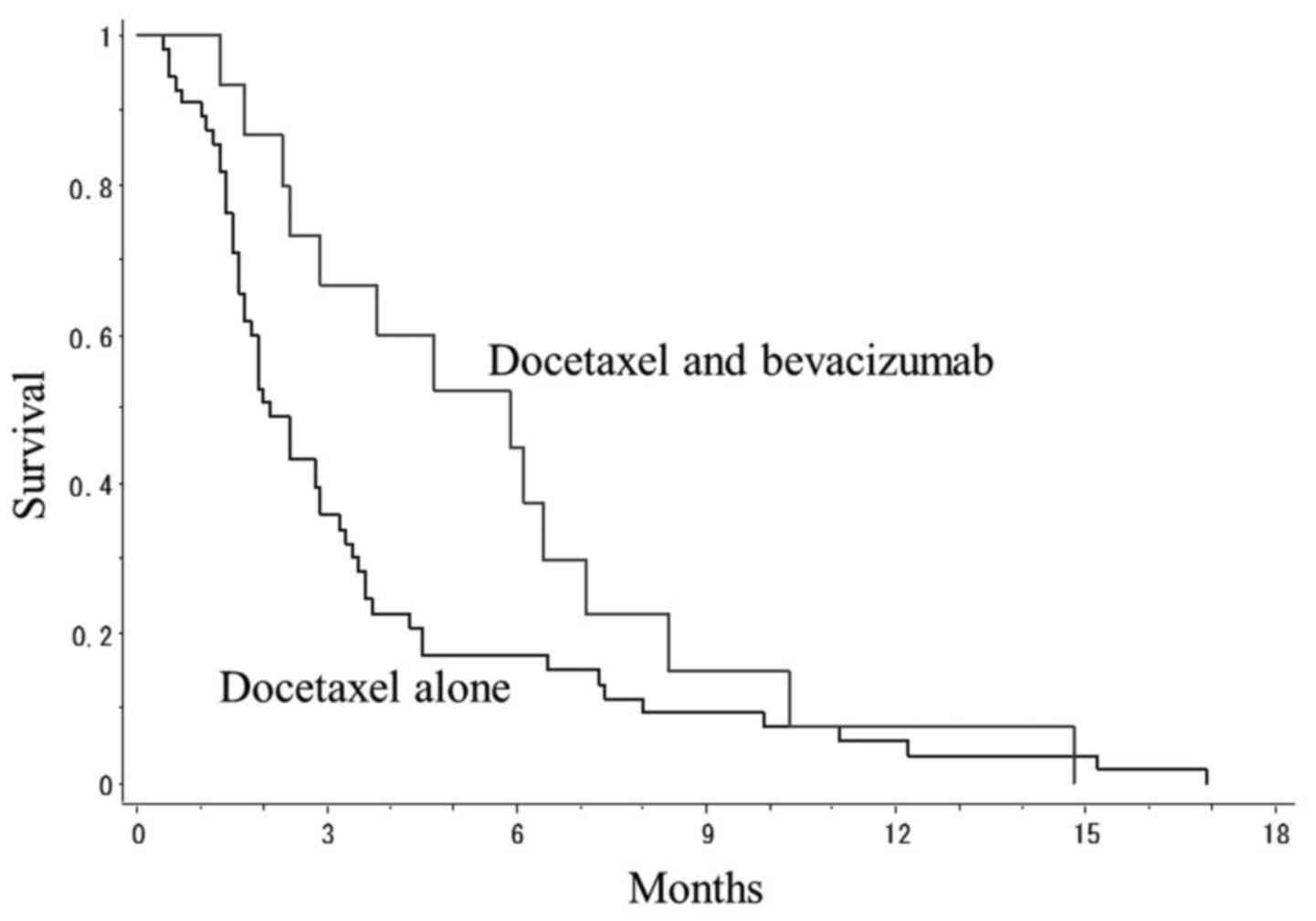A retrospective study of docetaxel and bevacizumab as a second‑ or later-line chemotherapy for non-small cell lung cancer
- Authors:
- Published online on: June 1, 2017 https://doi.org/10.3892/mco.2017.1282
- Pages: 131-134
Metrics: Total
Views: 0 (Spandidos Publications: | PMC Statistics: )
Total PDF Downloads: 0 (Spandidos Publications: | PMC Statistics: )
Abstract
Comparative results of second- or later-line bevacizumab plus docetaxel and docetaxel alone for patients with NSCLC have never been reported. In order to evaluate the combined effect of bevacizumab and docetaxel as second‑ or later‑line chemotherapy for NSCLC, a retrospective study was performed. Between November 2009 and April 2016, the medical records of all the patients <75 years old who were treated with docetaxel (60 mg/m2, day1, q3 or 4 weeks) plus bevacizumab (15 mg/kg, day 1, q3 or 4 weeks) as a second‑ or later‑line chemotherapy were reviewed. Complete data sets were obtained from 15 patients treated with docetaxel plus bevacizumab, and 55 patients treated with docetaxel alone. The overall response rate to docetaxel plus bevacizumab therapy was 26.7, and 53.3% of these patients had stable disease (SD), amounting to a disease control rate of 80.0%. On the other hand, the overall response rate to docetaxel alone therapy was 9.1, and 38.2% of these patients had SD, amounting to a disease control rate of 47.3%. All the patients treated with docetaxel plus bevacizumab therapy had grade 3 or 4 ‘neutropenia’ or ‘febrile neutropenia’, which developed in 100 and 26.7% of patients, respectively. The rates of these adverse events in patients treated with docetaxel alone were 63.6, and 10.9%, respectively. The mean progression free survival (PFS) in patients treated with docetaxel plus bevacizumab and that of patients with docetaxel alone was 5.9 and 2.1 months, respectively. There was a non‑significant tendency towards a difference in survival between the two treatment groups (P=0.081, log‑rank test). The possibility of improvement of response and prolongation of PFS in patients treated with second‑ or later line docetaxel and bevacizumab chemotherapy may be suggested in this study. However, the higher risk of febrile neutropenia must be noted for this combination of drugs.










